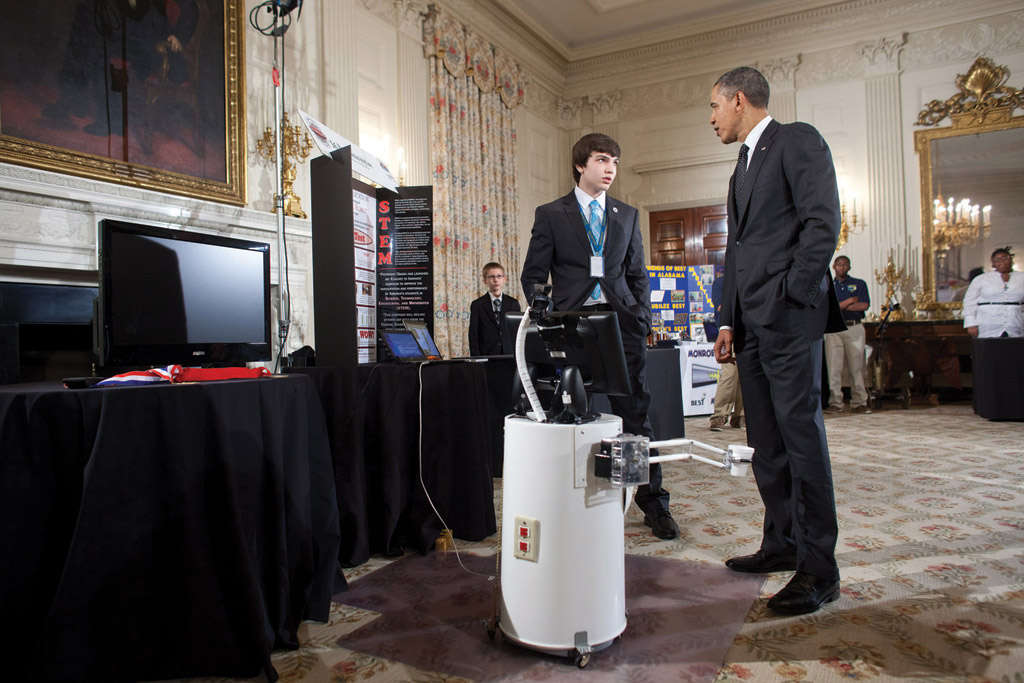The White House welcomes science

MAYA may just be the weirdest guest ever at the White House. And that’s saying a lot. The family of President Calvin Coolidge, who served from 1923 to 1929, kept exotic pets, including a raccoon named Rebecca and — very briefly — a black bear. But unlike MAYA, none of those pets was a robot made out of a recycled trash can and an old cordless vacuum cleaner.
On a February day, MAYA the robot stands next to its creator, 14-year-old Benjamin Hylak, in the White House’s State Dining Room. Reporters carrying TV cameras and political aides wearing suits zip in and out of the ornate gallery. Earlier, Hylak, a freshman at Salesianum High School in Wilmington, Del., talked about his invention with an eager President Obama. It’s all part of the second-ever White House Science Fair, an event held to honor young scientists and engineers.
Hylak’s creation is certainly worth the attention. He designed MAYA, short for Me And You Anywhere, for a simple but important purpose — to help people communicate. For MAYA’s head, Hylak attached a used netbook computer onto the robot’s shoulders. Using a camera attached to that computer, people can make video chat calls to any other computer connected to the Internet. Months before bringing MAYA to the White House, Hylak wheeled the robot to his grandmother’s nursing home. There, residents were able to speak with and see faraway loved ones, as if they were in the same room.
This story didn’t escape Obama’s attention. “Inventions like Benjamin’s could make life better for millions of families,” he said in a speech following the fair, which was held on February 7.
And Hylak wasn’t alone in turning science into a tool for helping people. He and nine other students that had competed in national science competitions sponsored by Society for Science & the Public — or SSP, the publisher of Science News for Kids — toured the White House this February. Their projects ranged from clever inventions, such as a new type of land-mine detector, to a study exploring the behavior of hurricanes.
“What impressed me so much is not just how smart you are but the fact that you recognize that you’ve got a responsibility to use your talents in service of something bigger than yourselves,” Obama said, addressing the visiting students.
Helping at home and abroad
More than 100 students were invited this year to the White House event, including 33 teams that exhibited their work. That’s more than double the number that displayed projects at the inaugural White House Science Fair, in October 2010.
Standing below a portrait of Abraham Lincoln after Obama’s speech, Hylak demonstrated to a small audience how MAYA works. First, the old computer monitor on its shoulders is blank. Then, Hylak, who’s a few feet away, appears on-screen grinning, as if the robot suddenly grew a human face. The video, he explains, is being sent over the Internet from a laptop he’s holding. Hylak previously won second place at the 2011 Broadcom MASTERS — Math, Applied Science, Technology and Engineering for Rising Stars — a national science competition for middle school students.